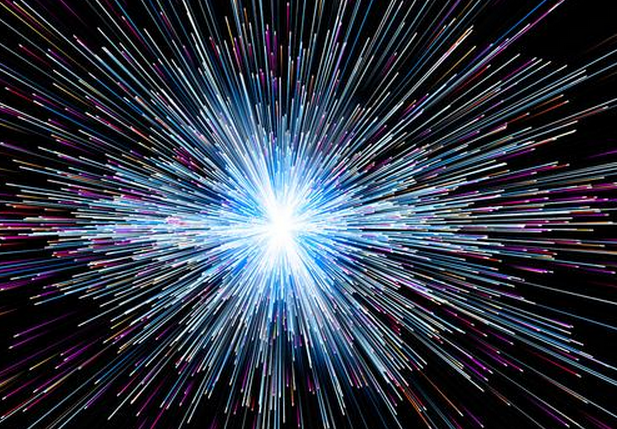


Gravity waves faster than light how to#
In the words of the eminent theoretical physicist, John Wheeler: “mass/objects tell(s) space-time how to curve, and space-time tells mass how to move”.Īs matter moves, it changes the curvature of the space-time in the form of waves. In general relativity, it is described as the way in which matter perceives distortions in space-time. Gravity is one of the four fundamental forces of nature (along with electromagnetic, weak and strong nuclear forces). These problems couldn’t be explained until Einstein’s Theory of General Relativity, hundreds of years later. In fact, according to this law, if we move one of the objects to a different point in space, then the other mass “knows” and reacts instantly over any distance (meaning that this “information” is travelling faster than the speed of light). There is nothing, however, that describes how the effects of gravity are transferred from one place to another. This law states that every object with mass – from the famous apple falling from a tree to the Moon orbiting the Earth – has its own gravitational field, which interacts with the gravitational fields of every other object in the universe. Isaac Newton recorded one of the first theories about gravity in his famous Law of Universal Gravitation. Now consider matter/gravity constrains the expansion of the Universe and if we mapped the Universe, we'd likely see a fibrous layout of matter with large, expanding voids between.LIGO: Journey of a gravitational wave (Credit: Caltech) It could even be slowing and we'd still perceive acceleration. From our 2D perspective, Universal expansion is accelerating even though the cause has remained steady. Then it grows from 6 to 7 and our Universe grows another 163unit^2. We just went from time unit (radius) 5 to 6 so our Universe (surface area = 4pi(r^2) grew by 138unit^2. This further leads to the assumption spacetime is 4D, none of these assumptions being far-fetched.Īssuming 4D spacetime and the expansion/contraction of space is on the 4th dimension, would a constant or slowing expansion be perceived to us as acceleration? Taking out a dimension for explanation - We're a 2D Universe, the shell of a sphere, expanding along the radius.
Gravity waves faster than light update#
What if stars and galaxies aren't moving away from us so much as the empty space between us is expanding? This leads to the assumption space expands and red-shifts in the absence of matter/gravity, contracts and blue-shifts in its presence (I posed the question in the MESSENGER Update thread). What wasn't given much thought at the time is if "unknown" energy - the accelerating expansion of the Universe - isn't actually happening and that conclusion was the result of naivete. Would evidence of "dark" aka "unknown" energy have anything to do with that? Before it, a cyclical Universe was widely regarded as true. This was when spacetime had a much higher energy density than it does now, so that the 4 forces (gravity, electromagnetism, strong and weak forces) were like a single force:

The inflationary expansion of the early universe in the moments immediately following the Big Bang is believed to have occurred at faster-than-lightspeed. This may indicate higher-than-expected strength of the gravitational waves that occurred during the early Big Bang. The value of a key parameter r has been estimated to be 0.2, which is significantly higher than the 0.11 which had been predicted or expected. The B-mode polarization of the Cosmic Microwave Background has been measured by the BICEP2 experiment from Antarctica, revealing important details about the early moments of the Big Bang, and giving strong validation of the inflationary universe theories:


 0 kommentar(er)
0 kommentar(er)
